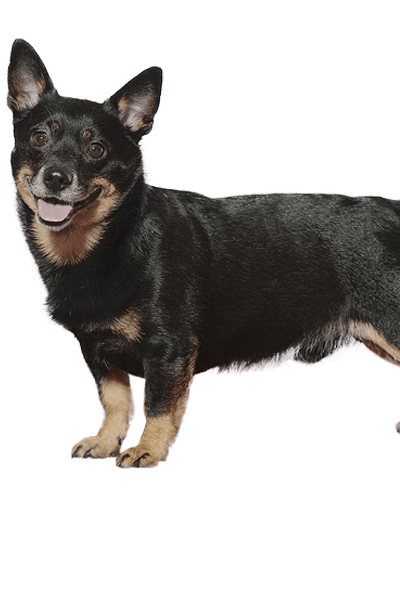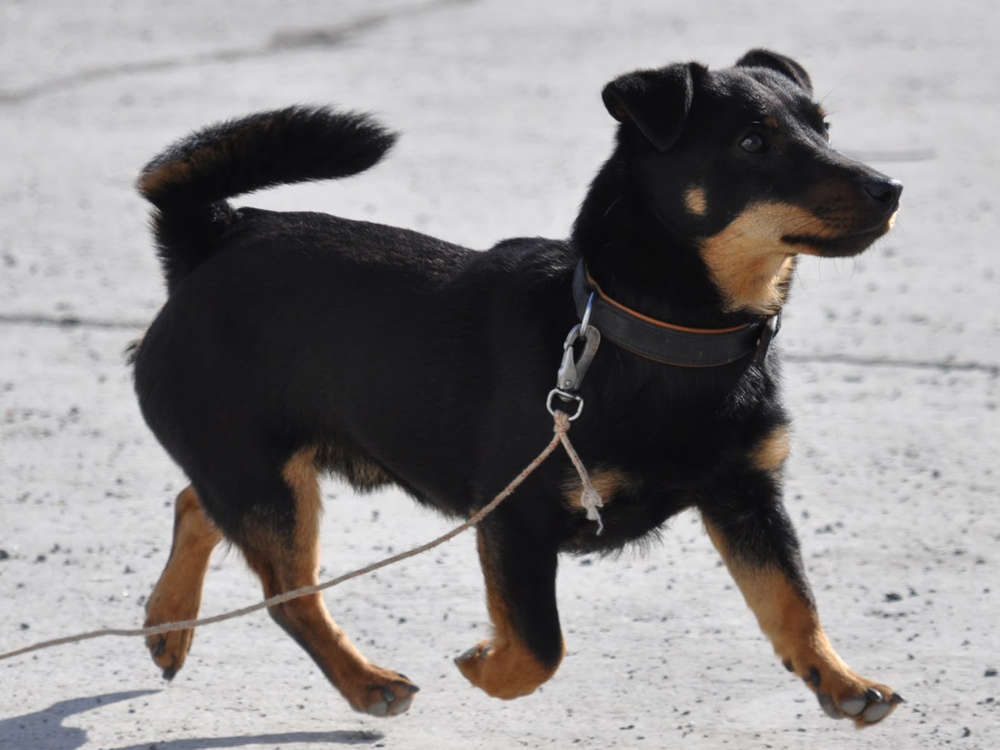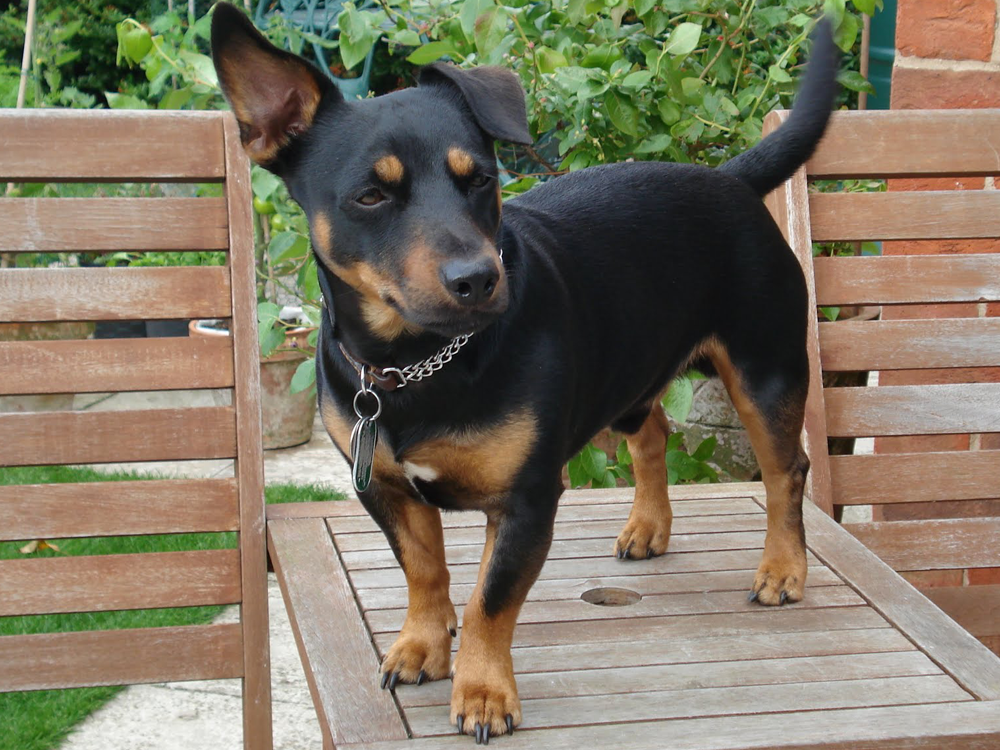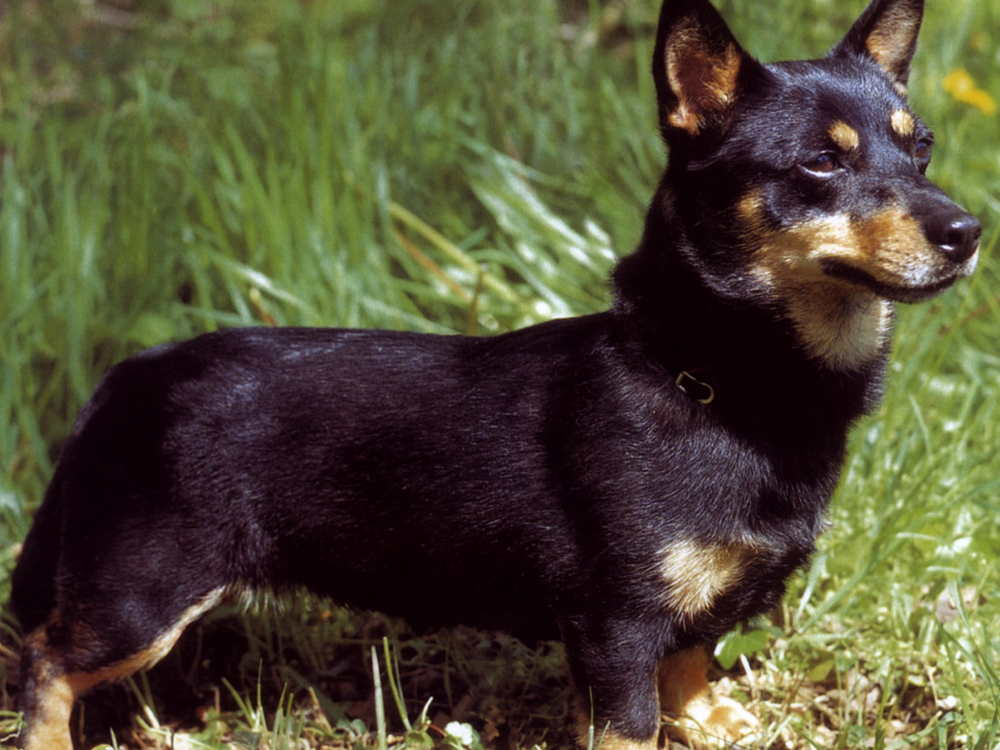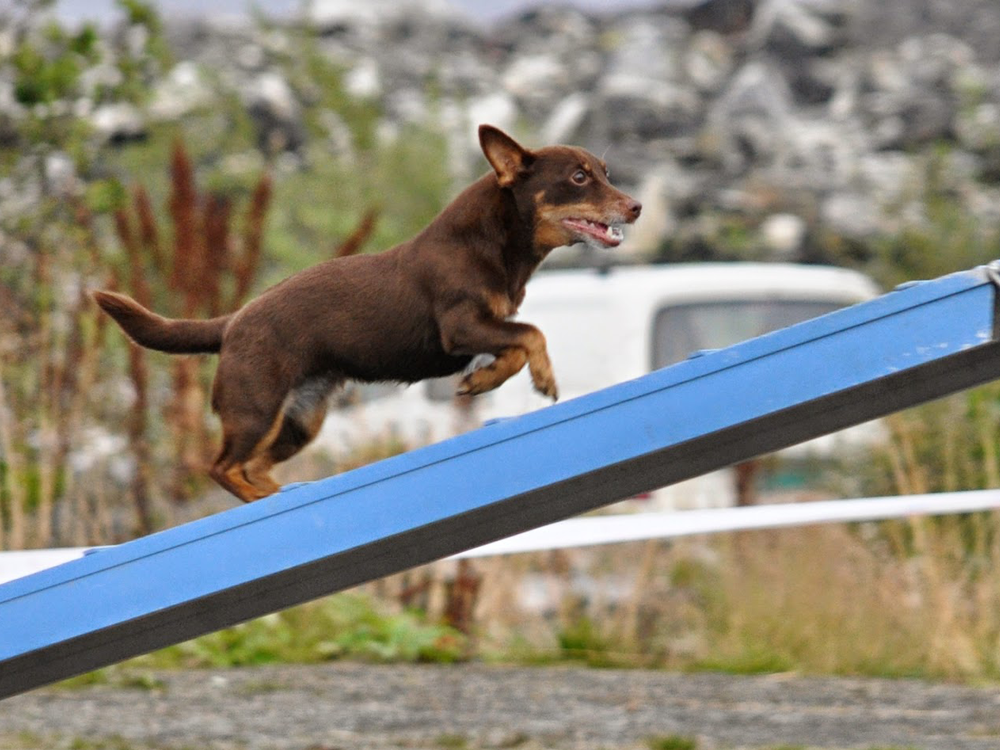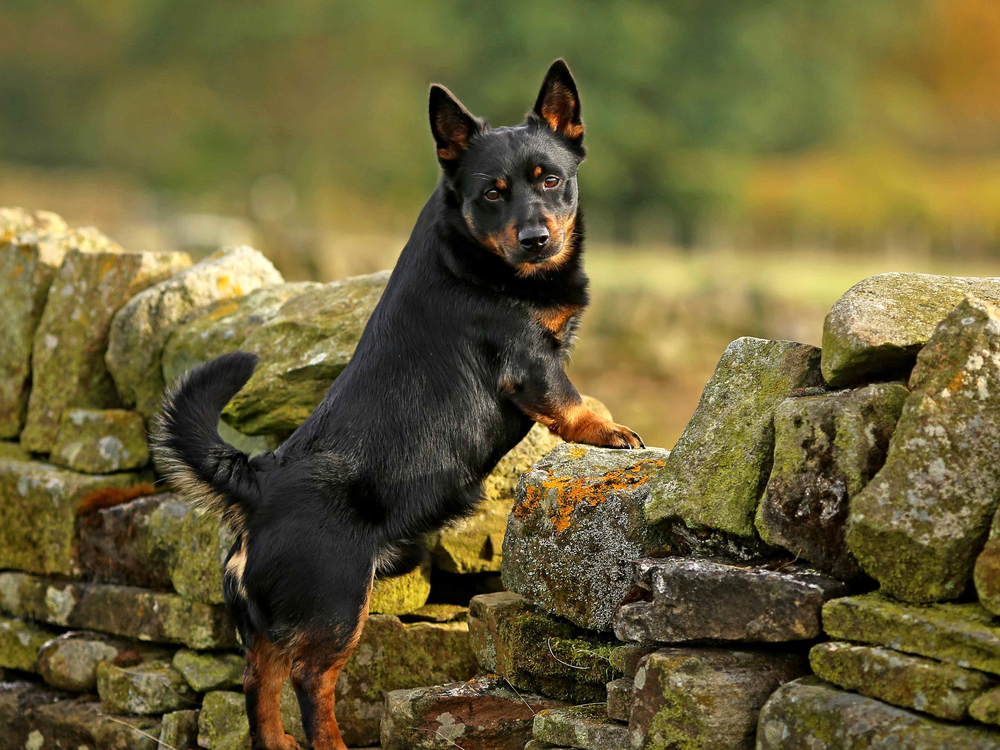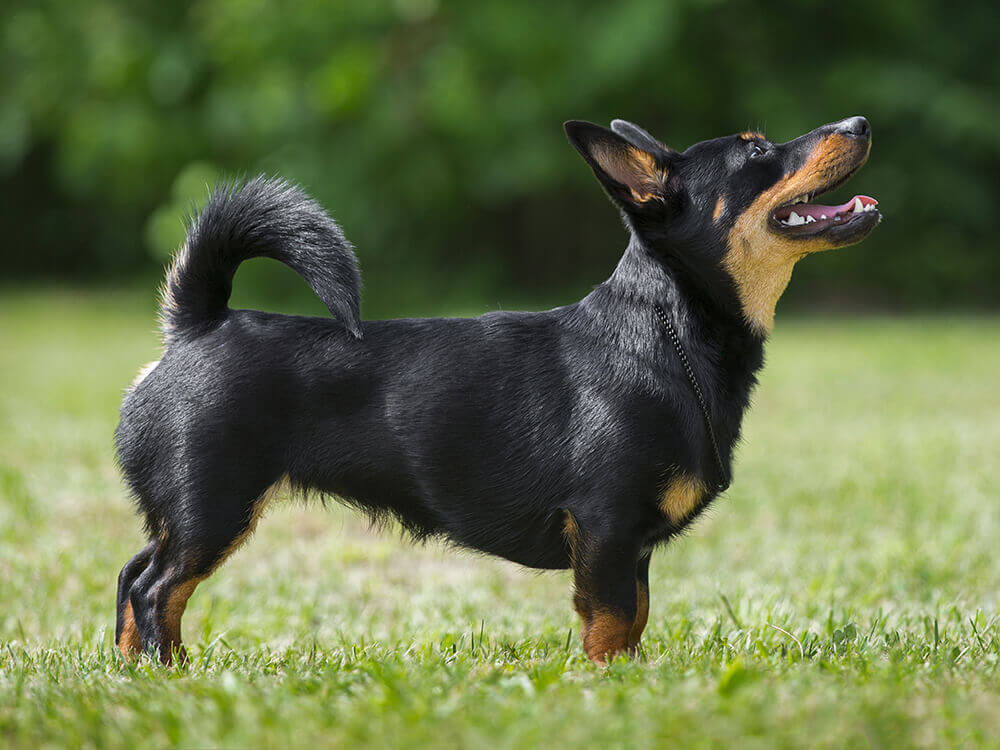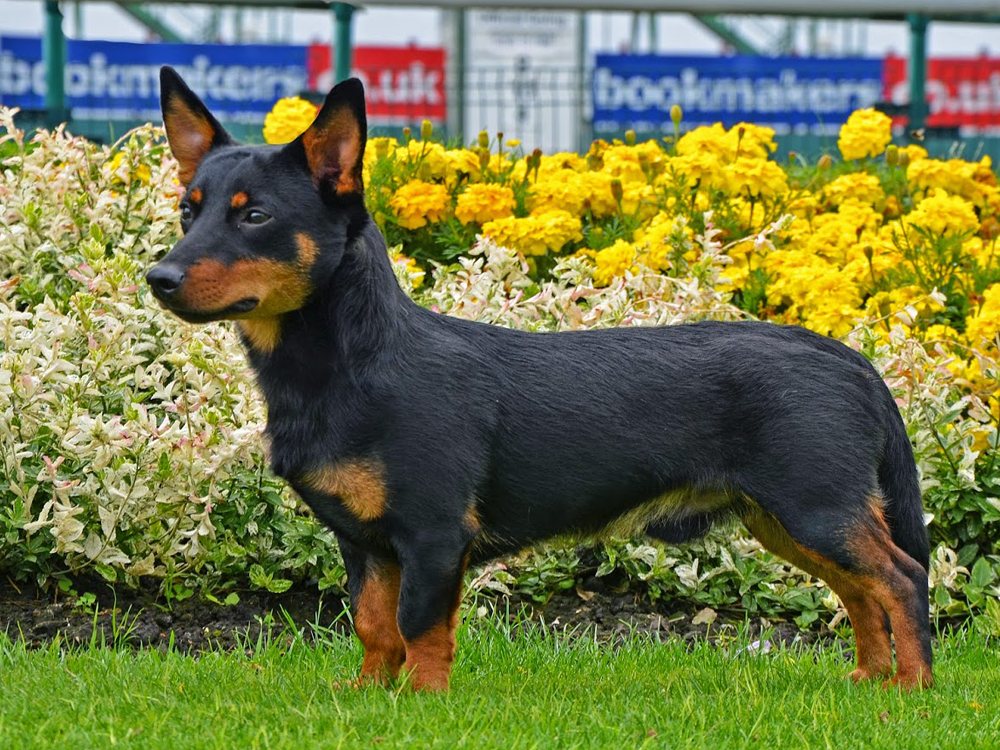
Lancashire Heeler Breed Pictures
Vital Breed Stats
| Height: | 25 - 31 cm M | 25 - 31 cm F |
| Weight: | 3 - 6 kg M | 3 - 6 kg F |
| Breed Group: | Hound Dog Group |
| Life Expectancy: | 13 - 15 years |
| KC Registered: | No |
Breed Characteristics
| Size: |  |
| Grooming: |  |
| Exercise Level: |  |
| Trainability: |  |
| Barking Level: |  |
| Good with Children: |  |
| Good with other pets: |  |
| Affectionate: |  |
| Protective: |  |
| Cost to Keep: |  |
Give a thumbs up if you love the Lancashire Heeler

0
More About the Breed
History
The Lancashire Heeler was originally bred and developed in the Welsh and English regions of Great Britain. Most experts believed that it descended from the Corgi line, the Black and Tan Terrier, the Manchester Terrier and the Dachshund. Due to their small size, Lancashire Heelers are highly prized herding dogs, able to nip at the heels to move and control the cattle and agile enough to move out of the way. They were also valued vermin hunters when they weren't out herding cattle.
The population of the Lancashire Heeler suffered a major decline; it was revived in the 1960's and in 1978 the Lancashire Heeler Club was established thanks to a dedicated breeder named Gwen Macintosh. The breed was recognised by The Kennel Club in the UK in 1981. In 1996, the Lancashire Heeler was recognised as a vulnerable breed with an annual registration of 300 a year in the UK.
Appearance
Being a herding dog, the Lancashire Heeler is a small but sturdy breed weighing 6 to 13 pounds and standing at 25 to 30 centimetres. It possesses a proportioned head with a tapering face. Its eyes are almond-shaped, dark or light brown in colour, showing an alert and determined expression. It has triangular ears that are held erect when excited. Its body is moderately longer than it is tall, almost similar to the Corgi in form with short and well-boned legs. Its tail slightly curves over the back but does not form a full ring.
When it comes to its coat, the Lancashire Heeler boasts of short, tight coat that is easy to groom. Its coat comes in black and tan combination or liver and tan.
Grooming
Grooming requirements include a weekly brushing, and a gentle wipe of a soft damp cloth will suffice to keep its coat shiny. Bathing is only required a few times a year.
Also, pay attention to other grooming aspects of the breed. Brush its teeth twice to thrice a week to avoid tooth and gum problems. Also check its ears for wax build-up, redness and odour, which are signs of infections. Trim its nails especially when you hear clicking sounds on the floor because overgrowth can be painful and cause splitting and cracking.
Temperament
Lancashire Heelers are friendly and lively dogs. They are a pleasant companion that are intelligent and playful. This dog breed is a people-pleaser and will perform well in training with the right owners or handlers. In short, it is easy to train. It can be an ideal dog breed for first-time owners as long as they are attentive enough to provide Lancashire Heelers with the proper socialisation and training.
Heelers have boundless energy and as such must be given a job to do to be kept busy, both mentally and physically. If they are left on their own for longer periods of time, they may find themselves in trouble to entertain and amuse themselves. One thing to consider when you think of getting a Lancashire Heeler is its tendency to nip when it is overly excited. However, the benefits always outweigh the negative as it is an excellent watchdog and will quickly alert its owners when strangers are present.
Intelligence
The Lancashire Heeler, being people-oriented, gets along well with children. However, more care should be taken with toddlers and small children since this dog breed can be a bit boisterous. Heelers are more relaxed and confident with older children who know how to behave around dogs. Regardless of the children's age, it is important that any interaction with the dog is supervised to keep playtime safe.
When it comes to other dogs, the Lancashire Heeler, when not properly socialised, can get stressed out when around other dogs. Also, care should be taken when Heelers are around smaller animals. Their hunting instincts might take over, and they will not hesitate to give chase when the opportunity presents itself.
Nutrition
- Senior and less active: up to 350 calories daily
- Typical adults: up to 400 calories daily
- Physically active/working dogs: up to 440 calories daily
Feeding
Health
Exercise
Cost of Ownership
Since the Lancashire Heeler is a rare breed with less than 300 registered in the UK and less than 7,000 worldwide, it will be a long waiting game. Make sure early on to put yourself on the waitlist if you don't want to wait years to get one. Other than that, you have other things to think of when you buy a Lancashire Heeler puppy, one of which is its price. A Lancashire Heeler puppy will cost not less than £650 or £850, still cheaper than most dogs. Pet insurance will set you back around £20 to £40 a month but is necessary to make sure you and your dog are protected from sudden illnesses or health emergencies.
When it comes to food, buying high-quality food will cost around £30 to £40 a month, while veterinary costs will likely force you to shell out at least £900 a year. Of course, this will include check-ups for preventive measures as well as basic procedures like vaccinations, boosters and neutering.
Lancashire Heeler Breed Highlights
- The Lancashire Heeler is a lively and affectionate breed that is alert and sociable.
- Because it desires to please people, it is well-suited as a family companion.
- Lancashire Heelers are also easy to train and will be suitable for first-time owners.
- It is an excellent watchdog, quick to alert when there are strangers about.
- The Kennel Club recognises it as a rare breed registered under the vulnerable native breeds.
- It requires at least two hours’ worth of physical and mental activities daily.
